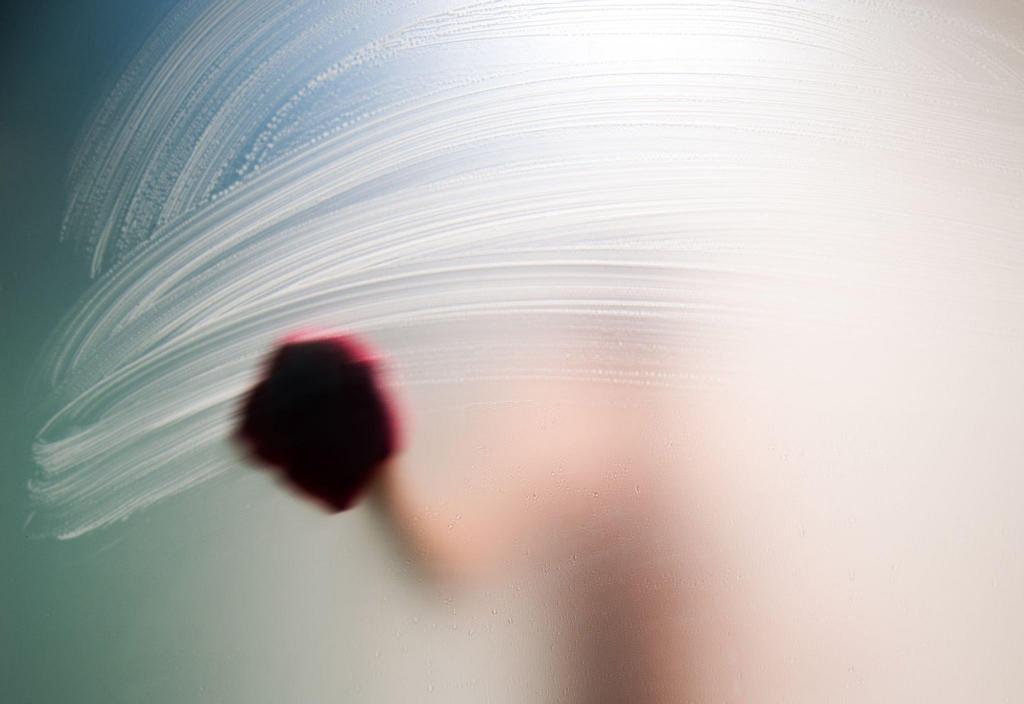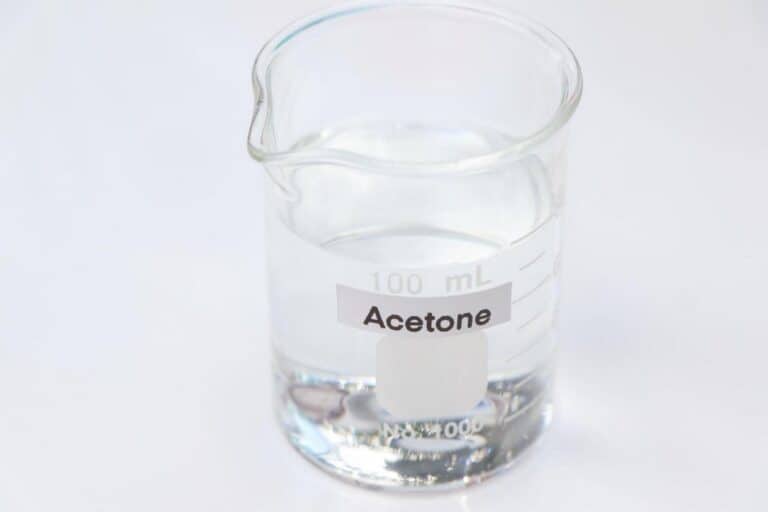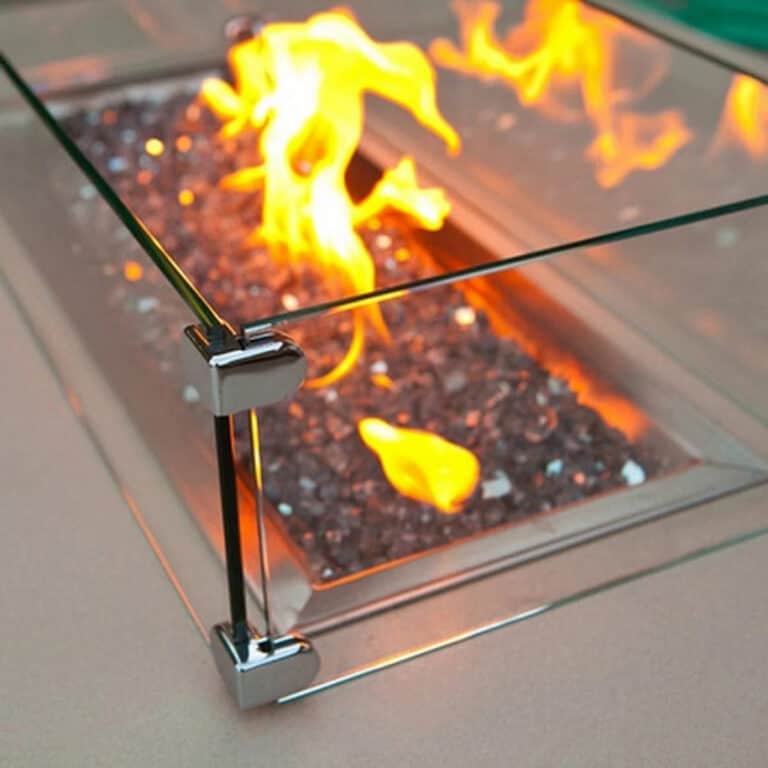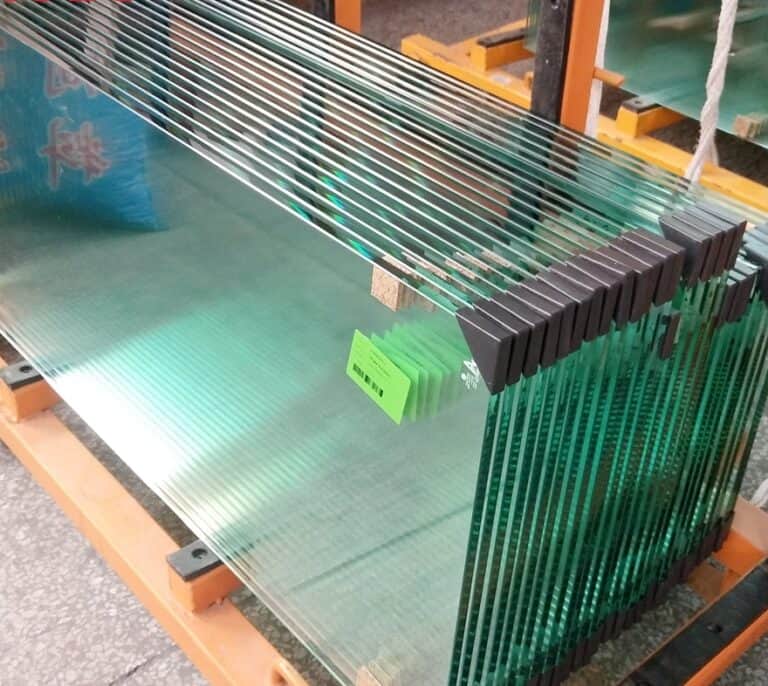How to Safely Use Acetone on Frosted Glass: Cleaning Tips and Tricks

Frosted glass is a popular choice for its unique aesthetic appeal, but keeping it clean and spotless can be quite a challenge. If you’ve ever struggled with removing stains from frosted glass, you’re not alone.
Many people turn to acetone, a powerful solvent, to tackle tough stains and restore their glass’s beauty and elegance. However, using acetone on frosted glass requires some caution and preparation to ensure that you don’t damage the glass or harm yourself.
In this article, we’ll explore some tips and tricks for safely using acetone on frosted glass, as well as some alternative cleaning methods that you can try. So, let’s dive in and learn how to restore the shine and beauty of your frosted glass with acetone.
What is Acetone?
Acetone is a colorless, flammable liquid that is commonly used as a solvent in various industrial, household, and cosmetic applications. It is a simple organic compound that belongs to the group of ketones, which are characterized by their carbonyl functional group. Acetone has a distinctive odor and is highly volatile, meaning that it evaporates quickly when exposed to air.
One of the most well-known uses of acetone is as a nail polish remover. It is effective at dissolving and removing nail polish from fingernails and toenails, making it a popular choice for personal grooming.
Acetone is also commonly used in the production of various chemicals, plastics, and synthetic fibers. It is a key ingredient in the manufacturing of many household items, including cleaning agents, paint thinners, and adhesives.
Acetone is also a powerful solvent for cleaning surfaces including frosted glass. Acetone is also use to clean metal before painting. Its ability to dissolve many types of stains and residues makes it an excellent choice for cleaning stubborn spots and marks on glass surfaces. However, because acetone is a highly flammable liquid, it requires careful handling and safety precautions to ensure that it is used safely and effectively.
In addition to its cleaning and solvent properties, acetone is also used in various medical applications. It is sometimes used as a solvent for medications and as a cleaning agent for medical equipment. It is also used in the production of some types of medical equipment and devices.
Why Acetone Works for Cleaning Frosted Glass?
Frosted glass is a type of glass that has been sandblasted or acid-etched to create a translucent surface. While frosted glass is aesthetically pleasing, it can be difficult to clean. Unlike clear glass, frosted glass has a textured surface that can trap dirt, grime, and other stains, making it harder to clean with traditional cleaning methods.
Acetone, on the other hand, can effectively dissolve most types of stains on frosted glass, making it easier to clean. When applied to frosted glass, acetone works by breaking down and dissolving the dirt and stains that have accumulated on the surface.
Its low surface tension allows it to penetrate into the tiny crevices and pores of the frosted glass, ensuring that even the most stubborn stains are removed.
| WARNING ! ⃝ √ |
|---|
| However, it’s important to note that acetone is a strong chemical and can damage certain types of plastics and surfaces. Therefore, it’s essential to understand the composition of your frosted glass and take precautions before using acetone. It is important to note that while acetone is an effective cleaner for frosted glass, it can be dangerous if not used properly. It is highly flammable and can be harmful if inhaled or ingested. Additionally, acetone can damage some types of plastic, so it is important to use it only on surfaces that are compatible with the solvent. |
Safety Precautions to Take Before Using Acetone on Frosted Glass
Before using acetone on frosted glass, it’s crucial to take certain precautions to ensure your safety and protect your glass. Here are some things to consider:
- Wear protective gear: Acetone can be harmful if it comes into contact with your skin or eyes. Therefore, it’s essential to wear protective gloves, goggles, and a mask when using acetone.
- Test a small area: Before applying acetone to the entire surface of your frosted glass, test a small area to ensure that the acetone does not damage the glass. Apply a small amount of acetone to a discreet corner of the glass and wait a few minutes to see if there are any adverse effects.
- Protect surrounding surfaces: Acetone can damage certain types of surfaces, such as painted walls and countertops. Therefore, it’s essential to protect any surrounding surfaces with plastic sheeting or newspaper.
- Work in a well-ventilated area: Acetone can produce fumes that can be harmful if inhaled. Therefore, it’s essential to work in a well-ventilated area or use a respirator.
Step-by-Step Guide: How to Use Acetone on Frosted Glass
Now that you have taken the necessary precautions, it’s time to use acetone on your frosted glass. Here is a step-by-step guide to using acetone on frosted glass safely:
- Clean the glass: Before using acetone, clean the glass with soap and water to remove any loose dirt or debris. Dry the glass thoroughly with a clean cloth.
- Apply acetone: Pour a small amount of acetone onto a clean cloth or sponge. Gently rub the cloth or sponge onto the frosted glass, applying a moderate amount of pressure. Avoid applying too much pressure, as this can damage the glass.
- Wait: Allow the acetone to sit on the glass for a few minutes to dissolve the stains and dirt. Be patient and avoid wiping the glass too soon, as this can prevent the acetone from working effectively.
- Wipe the glass: After a few minutes, use a clean cloth or sponge to wipe the glass gently. Use a circular motion to remove any remaining dirt or stains. Avoid using a back-and-forth motion, as this can create streaks on the glass.
- Repeat if necessary: If there are still stains or dirt on the glass, repeat steps 2-4 until the glass is clean. Be careful not to overuse acetone, as this can damage the glass.
- Rinse the glass: After removing all the stains and dirt, rinse the glass with water to remove any traces of acetone. Dry the glass thoroughly with a clean cloth.
Tips and Tricks for Using Acetone on Frosted Glass
Here are some tips and tricks for using acetone on frosted glass:
1. Test a small area first
Before using acetone on frosted glass, it’s essential to test a small area first to ensure that it doesn’t damage or discolor the glass. Apply a small amount of acetone to an inconspicuous area and wait for a few minutes to see if there’s any reaction. If there’s no discoloration or damage, you can proceed with cleaning the rest of the glass.
2. Apply acetone with a cotton ball or cloth
To apply acetone to frosted glass, use a cotton ball or cloth. Dip the cotton ball or cloth into the acetone and gently rub it on the stained area. Avoid applying too much pressure, as it can scratch the glass surface.
3. Work in small sections
To ensure that you clean the frosted glass thoroughly, itis recommended to work in small sections. This will allow you to focus on one area at a time and ensure that you don’t miss any stains or spots. Once you’ve finished cleaning one section, move on to the next.
4. Use a soft-bristled brush for stubborn stains
If there are stubborn stains on the frosted glass like oil based paint, you can use a soft-bristled brush to help loosen them. Dip the brush in acetone to clean paint from frosted glass and gently scrub the stained area. Be careful not to use too much pressure, as it can scratch the glass surface.
5. Wipe off excess acetone with a clean cloth
After cleaning the frosted glass with acetone, use a clean cloth to wipe off any excess acetone. This will help to prevent the acetone from evaporating and leaving behind residue on the glass surface.
6. Rinse the glass with water
Once you’ve finished cleaning the frosted glass with acetone, rinse it thoroughly with water. This will help to remove any remaining acetone and ensure that the glass is clean and free of residue.
7. Dry the glass with a clean towel
After rinsing the frosted glass with water, use a clean towel to dry it. This will help to prevent water spots and ensure that the glass is clean and shiny.
Alternatives to Using Acetone on Frosted Glass
While acetone is an effective solution for cleaning frosted glass, it’s not the only option. Here are some alternatives to using acetone on frosted glass:
- Vinegar: Vinegar is a natural cleaning solution that can remove stains and dirt on frosted glass. Mix equal parts of white vinegar and water in a spray bottle, and apply the solution to the glass. Allow the vinegar to sit for a few minutes before wiping the glass with a clean cloth.
- Baking soda: Baking soda is an abrasive cleaner that can remove tough stains on frosted glass. Mix baking soda and vinegar and water to create a paste, and apply the paste to the affected area. Use a soft-bristled brush to scrub the glass gently, and rinse with water.
- Rubbing alcohol: Rubbing alcohol is a mild solvent that can remove grease and grime on frosted glass. Apply rubbing alcohol to a clean cloth or sponge, and rub the affected area gently. Rinse the glass with water and dry with a clean cloth.
How to Maintain Frosted Glass After Using Acetone
After using acetone on your frosted glass, it’s important to maintain its clarity and cleanliness. Here are some tips for maintaining frosted glass after using acetone:
- Clean regularly: To prevent stains and dirt from accumulating on your frosted glass, clean it regularly with a mild soap and water solution.
- Avoid using abrasive cleaners: Abrasive cleaners can scratch and damage frosted glass. Avoid using any cleaners that contain harsh chemicals or abrasive materials.
- Use a squeegee: After showering, use a squeegee to remove any water droplets from your frosted glass shower door.
- Avoid touching the glass: When touching frosted glass, use clean hands and avoid touching it with any objects or materials that could scratch or damage the surface.
- Apply a protective coating: There are various protective coatings available that can help to maintain the clarity and cleanliness of your frosted glass. These coatings can be applied to the glass surface and will help to prevent stains and dirt from adhering to the surface.
- Check for damage: Regularly inspect your frosted glass for any signs of damage, such as cracks or chips. If you notice any damage, have it repaired as soon as possible to prevent further damage.
Conclusion
Acetone is a powerful solvent that can effectively remove stains and dirt from frosted glass. However, it’s important to use it safely and correctly to avoid damaging the glass. By following the tips and techniques outlined in this article, you can safely and effectively use acetone on your frosted glass to keep it looking clean and clear.
Remember to always wear protective gloves and work in a well-ventilated area when using acetone. If you’re unsure about using acetone on your frosted glass, consider using alternative cleaning solutions such as vinegar, baking soda, or rubbing alcohol.
By maintaining your frosted glass regularly and avoiding harsh chemicals and abrasive cleaners, you can keep it looking its best for years to come. With a little bit of care and attention, your frosted glass can be a beautiful and functional addition to your home or business.





